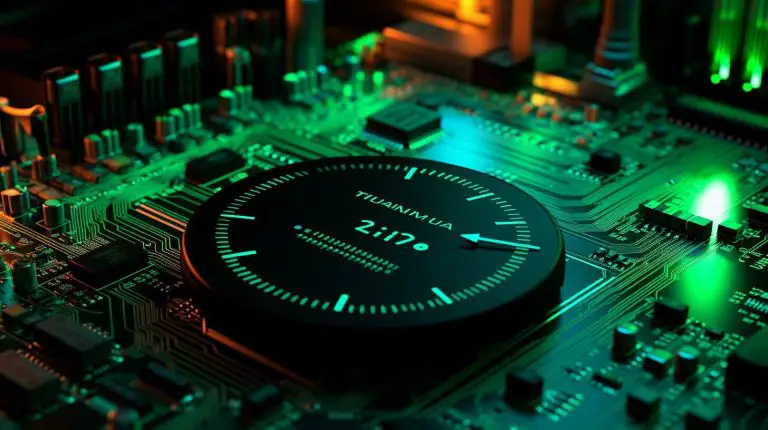Understand Linux: What is the Init System
Init systems are a fundamental component of computer systems, but their inner workings often remain shrouded in mystery. In this article, I will demystify the concept of an init system, explaining its purpose and how it functions within an operating system.
An init system, also known as the initialization system, is the first program that starts during the boot process of a computer system. Its primary role is to initialize and manage the execution of other programs, services, and processes on the system. Think of it as the conductor of an orchestra, overseeing the smooth operation of the entire system.
The init system acts as a communication bridge between the operating system and the user, ensuring that essential services and processes are started and stopped correctly. It provides features such as process supervision, service management, dependency handling, and logging, making it a critical component for the stability and efficiency of an operating system.
Key Takeaways
- An init system initializes and manages the execution of programs and services on a computer system.
- It acts as a communication bridge between the operating system and the user.
- Init systems provide features such as process supervision, service management, dependency handling, and logging.
- Understanding the architecture and advantages of init systems is crucial for system administrators and developers.
- Init systems play a vital role in ensuring the stability and efficiency of the system.
Understanding Init System Architecture
An init system is more than just a program that initializes and manages the execution of other programs on a computer system. It is a complex architecture consisting of a set of scripts and configuration files that define how system services should be started and stopped. By understanding the underlying architecture of an init system, we can gain insights into its functionality and how it contributes to the overall stability and efficiency of an operating system.
The init system typically starts as a daemon process, which is a background service that runs continuously in the system. It is responsible for launching and managing other processes and services. The init system maintains a process hierarchy, with the parent process being the init process itself. This hierarchy allows the init system to monitor the status of running services and handle dependencies between services.
One key aspect of an init system’s architecture is its ability to handle dependencies between services. Services often have dependencies on other services, meaning that they require certain services to be running before they can start. The init system keeps track of these dependencies and ensures that services are started in the correct order to satisfy these dependencies. This ensures that the system can boot up and run smoothly without any issues.
To provide a visual representation of the init system architecture, the following table outlines the main components and their functions:
| Component | Function |
|---|---|
| Daemon process | Starts as the first process during boot and manages other processes |
| Process hierarchy | Maintains a hierarchical structure of processes |
| Dependency handling | Manages dependencies between services and ensures correct startup order |
| Configuration files | Define how system services should be started and stopped |
By understanding the architecture of an init system, we can appreciate its critical role in managing system processes and services. This knowledge empowers system administrators and developers to effectively utilize init systems for optimizing the performance and stability of operating systems.
Features of Init System
An init system is a crucial component of an operating system, providing various features that are essential for managing system processes and services. Some of the key features of an init system are:
- Process Supervision: Init systems are responsible for supervising the execution of processes on a computer system. They monitor the status of running processes, restart them if they fail, and ensure their proper functioning.
- Service Management: Init systems handle the startup and shutdown of system services. They start services during the boot process and stop them when the system shuts down or reboots. Init systems also allow administrators to manage and control services, enabling them to start, stop, and restart services as needed.
- Dependency Handling: Init systems manage dependencies between system services. They ensure that services are started in the correct order, taking into account any dependencies they have on other services. This ensures that services are started and stopped in a coordinated manner, preventing issues related to missing dependencies.
- Logging: Init systems provide logging capabilities, allowing administrators to monitor and analyze system events. They record information about the startup and shutdown process, service status changes, and any errors or warnings that occur during system operation. This logging information is valuable for troubleshooting and diagnosing issues on the system.
These features make init systems an integral part of an operating system, contributing to its stability, efficiency, and manageability. They allow administrators to effectively control system processes and services, ensuring the smooth operation of the system.
With the powerful features provided by init systems, administrators and developers can optimize system performance, troubleshoot issues, and ensure the reliable operation of their operating systems.
Advantages of Init System
The init system offers a range of advantages that contribute to the stability and efficiency of an operating system. Here are some key benefits:
- Reliable Process Supervision: The init system provides robust process supervision capabilities, ensuring that system services and processes are continuously monitored. It can automatically restart failed processes, preventing service interruptions and ensuring the smooth operation of the system.
- Efficient Service Management: With its service management features, the init system enables administrators to easily start, stop, and manage system services. It allows for the efficient allocation of resources and ensures that services are running optimally.
- Dependency Handling: Init systems excel in handling dependencies between services. They can accurately determine the order in which services should start or stop based on their dependencies, ensuring that all necessary prerequisites are met.
- Enhanced Logging and Troubleshooting: Init systems provide detailed logging capabilities, allowing administrators to easily track system events and diagnose issues. This facilitates efficient troubleshooting and helps maintain system reliability.
Overall, the advantages of the init system contribute to a more stable and efficient operating environment, making it an essential component of modern systems.
Differences in Init Systems: Init System vs other systems
Init systems are the backbone of an operating system, responsible for initializing and managing the execution of various services and processes. However, different implementations of init systems exist, each with its own distinctive features and characteristics. In this section, we will explore the differences between popular init systems such as System V init, Upstart, and systemd.
System V init
System V init is one of the oldest and most widely used init systems. It follows a sequential approach to start system services, executing scripts in a fixed order defined by runlevels. This init system relies on shell scripts for configuration and has been the standard for many Unix-based systems. However, System V init lacks advanced features like dependency tracking and parallel initialization, leading to slower startup times and less efficient resource management.
Upstart
Upstart is a more modern init system developed by Ubuntu for its operating systems. It introduces event-based initialization, allowing services to be started and stopped dynamically in response to system events. Upstart also focuses on parallel processing, enabling faster startup times and better system responsiveness. Additionally, Upstart offers advanced features like automatic respawn of failed services and logging capabilities. Despite its advantages, Upstart has seen limited adoption outside the Ubuntu ecosystem.
systemd
systemd is a groundbreaking init system that has become the de facto standard for many Linux distributions. It aims to improve system boot speed, reliability, and overall performance. systemd introduces several innovative features, including aggressive parallelization, dependency tracking, socket activation, and process supervision. These features enable systemd to start services in parallel, reduce dependencies, and efficiently manage system resources. However, systemd has also sparked controversy due to its size, complexity, and deviation from traditional Unix design principles.
| Init System | Features | Pros | Cons |
|---|---|---|---|
| System V init | Sequential initialization Script-based configuration |
Widely supported Easy to understand and customize |
Slow startup times Limited resource management |
| Upstart | Event-based initialization Parallel processing Automatic respawn of failed services |
Fast startup times Dynamic service management |
Limited adoption outside Ubuntu |
| systemd | Aggressive parallelization Dependency tracking Socket activation Process supervision |
Fast and efficient initialization Advanced resource management |
Controversial Complexity and deviation from traditional Unix design principles |
Overall, the choice of init system depends on the specific requirements and preferences of the operating system. While System V init remains widely used, newer systems like Upstart and systemd offer enhanced capabilities for faster and more efficient system initialization. It is essential for system administrators and developers to consider these differences when selecting an init system and understanding their impact on system performance and manageability.
How Does Init System Work?
An init system is a critical component of an operating system that manages the startup and shutdown processes, as well as the execution of various system services and processes. But how does an init system actually work? Let’s take a closer look.
During the boot process, the init system, which is the first process to start, initializes the system by reading configuration files and setting up the environment. It then launches other system processes and services based on the defined dependencies and startup instructions.
The init system maintains a process hierarchy, monitoring the status of running services and handling any necessary dependencies between them. It ensures that the system services are started in the correct order and that they are properly stopped when needed, maintaining a stable and efficient operation of the system.
One of the key functionalities of an init system is process supervision. It continuously monitors the running processes and automatically restarts them if they crash or terminate unexpectedly. This helps to ensure the reliability and availability of critical system services.

Table: Init System Workflow
| Step | Description |
|---|---|
| 1 | Init system starts as the first process during boot. |
| 2 | Reads configuration files and sets up the environment. |
| 3 | Launches system services based on defined dependencies. |
| 4 | Monitors running services and handles dependencies between them. |
| 5 | Supervises processes, automatically restarting them if needed. |
| 6 | Handles system shutdown, ensuring proper stopping of services. |
Use Cases of Init Systems
Init systems are fundamental components of modern operating systems and have a wide range of real-world applications. These systems are crucial for managing the execution of programs, ensuring system stability, and optimizing resource utilization. Let’s explore some common use cases where init systems play a vital role:
1. Server Management
Init systems are extensively used in server environments to control and monitor various system services. They facilitate the automatic startup and shutdown of essential services, such as web servers, databases, and network services. By managing service dependencies and providing process supervision, init systems help maintain server uptime and ensure reliable service delivery.
2. Containerization
In the era of containerization, init systems are instrumental in orchestrating the startup and management of containerized applications. Init systems work in tandem with container runtimes, such as Docker, to launch and manage multiple containers on a single host. They handle service dependencies within containers and provide a consistent environment for containerized applications to execute seamlessly.
3. Embedded Systems
Init systems find extensive use in embedded systems, where resource optimization and performance are critical. They handle the initialization of hardware components, manage system services, and ensure efficient utilization of system resources. Init systems in embedded systems often have specialized configurations tailored to the specific requirements of the device or application.
4. System Integrity and Security
Init systems play a crucial role in maintaining system integrity and security. They enforce access controls, limit process privileges, and monitor system activities. Init systems also help in the execution of system initialization scripts that configure security policies and set up secure communication channels. By ensuring the proper initialization of security-related processes, init systems contribute to the overall security posture of the operating system.
These are just a few examples of the practical applications of init systems. In reality, the use cases can vary depending on the specific requirements of the operating system and the environment in which it operates.
Advancements in Init Systems
Init systems have continually evolved to keep pace with the changing demands of modern operating systems. These advancements have brought about a range of new features and improvements that enhance system performance, security, and management capabilities. As we look to the future, several key areas are expected to drive further advancements in init systems.
Enhanced Boot Times
One area of focus for future init system advancements is optimizing boot times. As technology advances, users expect faster and more efficient system startup. Init systems will continue to explore ways to streamline the initialization process, reducing the time it takes for the operating system to become fully functional. By minimizing unnecessary delays and optimizing resource allocation, init systems can provide users with quicker access to their systems.
Improved Security Features
In an era of increasing cyber threats, security is a top concern for operating system developers. Init systems are no exception. Future advancements will likely include improved security features that safeguard system services and processes from unauthorized access or malicious attacks. These enhancements may include enhanced process isolation, secure boot mechanisms, and enhanced authentication and authorization capabilities.
Enhanced Management Capabilities
Init systems play a crucial role in managing system services and processes. As technology and software ecosystems become more complex, init systems will need to evolve to meet the growing demands of system administrators and developers. Future advancements may include enhanced management capabilities such as improved service monitoring and control, streamlined dependency handling, and advanced logging and debugging tools. These enhancements will empower system administrators to efficiently manage and troubleshoot their systems.
| Advancement | Description |
|---|---|
| Enhanced Boot Times | Optimizing initialization process to reduce system startup time. |
| Improved Security Features | Enhanced measures to protect system services from unauthorized access. |
| Enhanced Management Capabilities | Improved tools for system administrators to manage and troubleshoot systems. |
Conclusion
After diving into the world of init systems, it is clear that they play a vital role in managing system processes and services in an operating system. With features like process supervision, service management, and dependency handling, init systems ensure the stability and efficiency of our systems. As system administrators and developers, it is essential to understand the architecture, features, and advantages of init systems to effectively manage our systems.
Init systems have evolved over the years to meet the changing needs of modern operating systems. With advancements in features, performance, and compatibility, init systems have become more powerful and reliable. Looking towards the future, we can anticipate even faster boot times, enhanced security features, and improved management capabilities.
By embracing the power of init systems, we can efficiently manage our systems and ensure their smooth operation. Whether it’s in real-world applications or the development of new technologies, init systems are essential components that enable us to harness the full potential of our operating systems. So let’s continue to explore, learn, and leverage the capabilities of init systems to bring about better performance and reliability in our digital ecosystems.
FAQ
What is an init system?
An init system is a program that initializes and manages the execution of other programs on a computer system. It is responsible for starting and stopping system services and acts as a communication bridge between the operating system and the user.
What is the architecture of an init system?
The architecture of an init system consists of a set of scripts and configuration files that define how system services should be started and stopped. It starts as a daemon process, launches other processes, manages their lifecycle, monitors service statuses, and handles dependencies.
What are the features of an init system?
Some features of an init system include process supervision, service management, dependency handling, and logging.
What are the advantages of an init system?
Advantages of an init system include stability, efficiency, improved system management, better service control, and easier troubleshooting.
How do different init systems differ?
Different init systems, such as System V init, Upstart, and systemd, differ in terms of design philosophy, syntax, startup speed, and compatibility with different operating systems.
How does an init system work?
An init system follows a set of configuration files and scripts to initialize system services. It starts as the first process, reads configuration files, sets up the environment, launches other processes, and handles the shutdown process.
What are the use cases of an init system?
Init systems are used in various real-world applications, including server management, process supervision, service control, and system initialization.
What are the advancements in init systems?
Advancements in init systems include more advanced features, improved performance, and better compatibility with different platforms. Future advancements may focus on faster boot times, enhanced security features, and improved management capabilities.
Conclusion
Understanding the architecture, features, and advantages of init systems is essential for system administrators and developers. Init systems play a crucial role in managing system processes and services, ensuring the stability and efficiency of the system.
- About the Author
- Latest Posts
Mark is a senior content editor at Text-Center.com and has more than 20 years of experience with linux and windows operating systems. He also writes for Biteno.com





